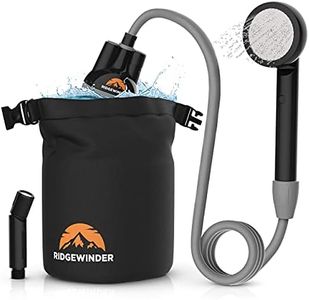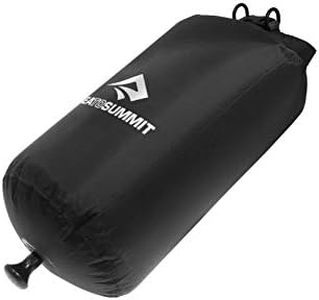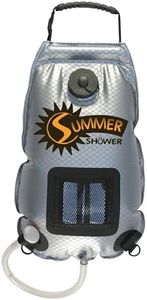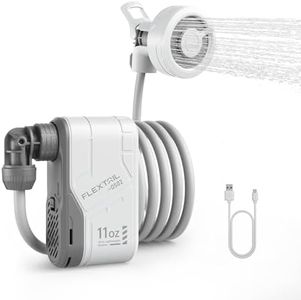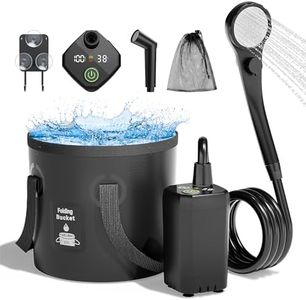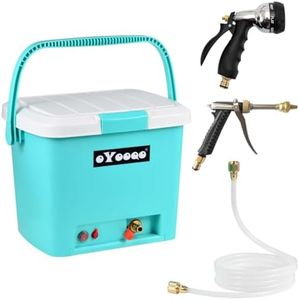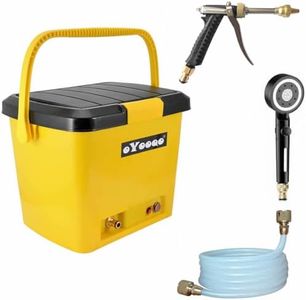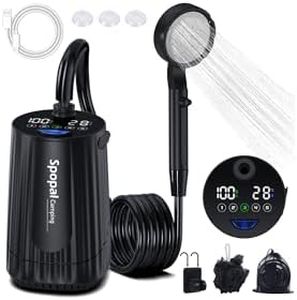We Use CookiesWe use cookies to enhance the security, performance,
functionality and for analytical and promotional activities. By continuing to browse this site you
are agreeing to our privacy policy
10 Best portable showers
From leading brands and best sellers available on the web.Buying Guide for the Best portable showers
Choosing the right portable shower can make outdoor adventures, camping trips, or emergency situations much more comfortable. It’s all about finding a model that suits where and how you’ll be using it. Different types offer varying conveniences, so it’s important to consider how you intend to use the shower and which features are the most important for your specific needs. Start by thinking about things like water capacity, method of operation, portability, and durability to help narrow down your options.Water CapacityWater capacity refers to how much water the portable shower can hold at one time, and it's a crucial consideration. A larger tank means longer showers or more back-to-back uses, but it also results in a heavier and bulkier package. The capacity usually ranges from a few liters to over ten liters. Small capacities (under 5 liters) are light and easy to carry, great if you only need quick rinses or are backpacking. Medium capacities (5–10 liters) strike a balance between portability and convenience, suitable for one or two showers. Large tanks (over 10 liters) are best for groups, families, or car camping where weight isn't much of an issue. Choose based on how many people will use it and whether you need to carry it far.
Heating MethodThe heating method determines how you get warm water. Some portable showers are solar-heated, others need to be pumped and filled with preheated water, while some come with battery or gas-powered heaters. Solar showers use the sun to warm the water in a black bag; they're lightweight and eco-friendly but depend on sunshine and take hours to heat. Pump-fueled or battery/gas-powered models provide instant hot water and consistent performance regardless of the weather, but they're heavier and require fuel or batteries. If you want warm water wherever you go or in cold conditions, consider powered models; if you don’t mind cool water or will be in sunny areas, solar is a good, simple choice.
Water PressureWater pressure affects how effectively the shower rinses you off. It can range from simple gravity-fed dribbles to hand- or foot-pumped systems that build more pressure, up to powered units that can simulate your home shower. Gravity-fed models are simplest and lightest, but their pressure is weak and best for a gentle rinse. Manually pumped models can give you more pressure and control, good for tougher cleaning, though they require some physical effort. Powered showers provide the highest pressure but tend to be bulkier and need power sources. Think about whether you just need a rinse or want a more pressurized, thorough wash when making your choice.
PortabilityPortability is all about how easy the shower is to transport and set up. Some showers are simple bags that fold down compactly and are very light, perfect for backpackers or minimalists. Others come with rigid tanks, hose attachments, and even stands or privacy enclosures, making them heavier and bulkier, but often easier and more comfortable to use. Consider how much weight and space you can spare in your backpack or vehicle, and whether you’ll be carrying your shower over long distances.
Durability and Build QualityDurability covers how well the portable shower stands up to outdoor use, rough handling, and repeated setups. It matters because outdoor gear often takes a beating, especially in wild settings. Showers made of thick, reinforced materials and strong seams will last longer and resist leaks, while thinner, lighter materials are more prone to damage. If you plan frequent use or adventures in rough terrain, aim for tougher construction even if it adds some weight; occasional, casual users can go for lighter models.
Ease of Use and MaintenanceHow easy a shower is to set up, fill, operate, and clean can make a big difference in your experience. Simpler designs are quick and straightforward, requiring little more than filling and hanging, but may sacrifice features. More complex systems can offer extra comfort or pressure but may have more parts that need attention. Consider who will be using the shower and in what situations—if it needs to be usable by young, elderly, or people unfamiliar with camping gear, prioritize simplicity. Removable hoses, wide openings for cleaning, and easy drainage also help keep your shower working well over time.

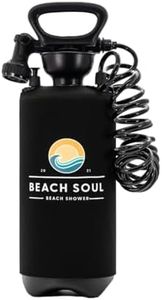

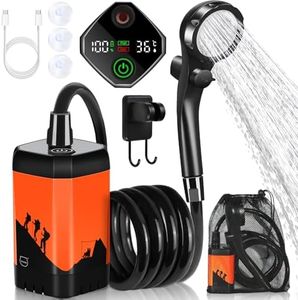
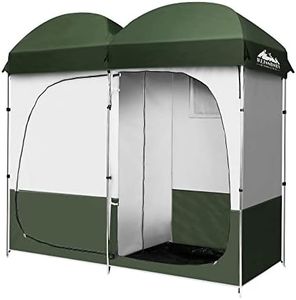

![Portable Shower for Camping, [8000mAh Long-Lasting] Spopal Rechargeable Camping Shower, Intelligent LED Display, 5 Speed Mode, Electric Shower Pump for Camping, Hiking, Travel, Car & Pet Clean](https://images-proxy.bestreviews.guide/svJCzSXlD_hkx_ZK0eNdsPU_ZpU=/0x300/https://m.media-amazon.com/images/I/41CAybezBRL._AC_CX679_.jpg)
